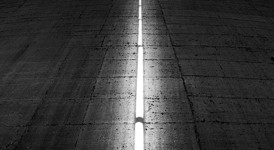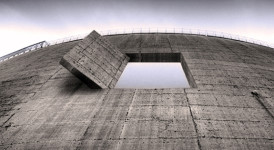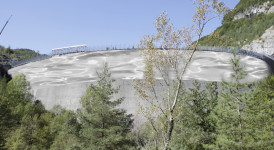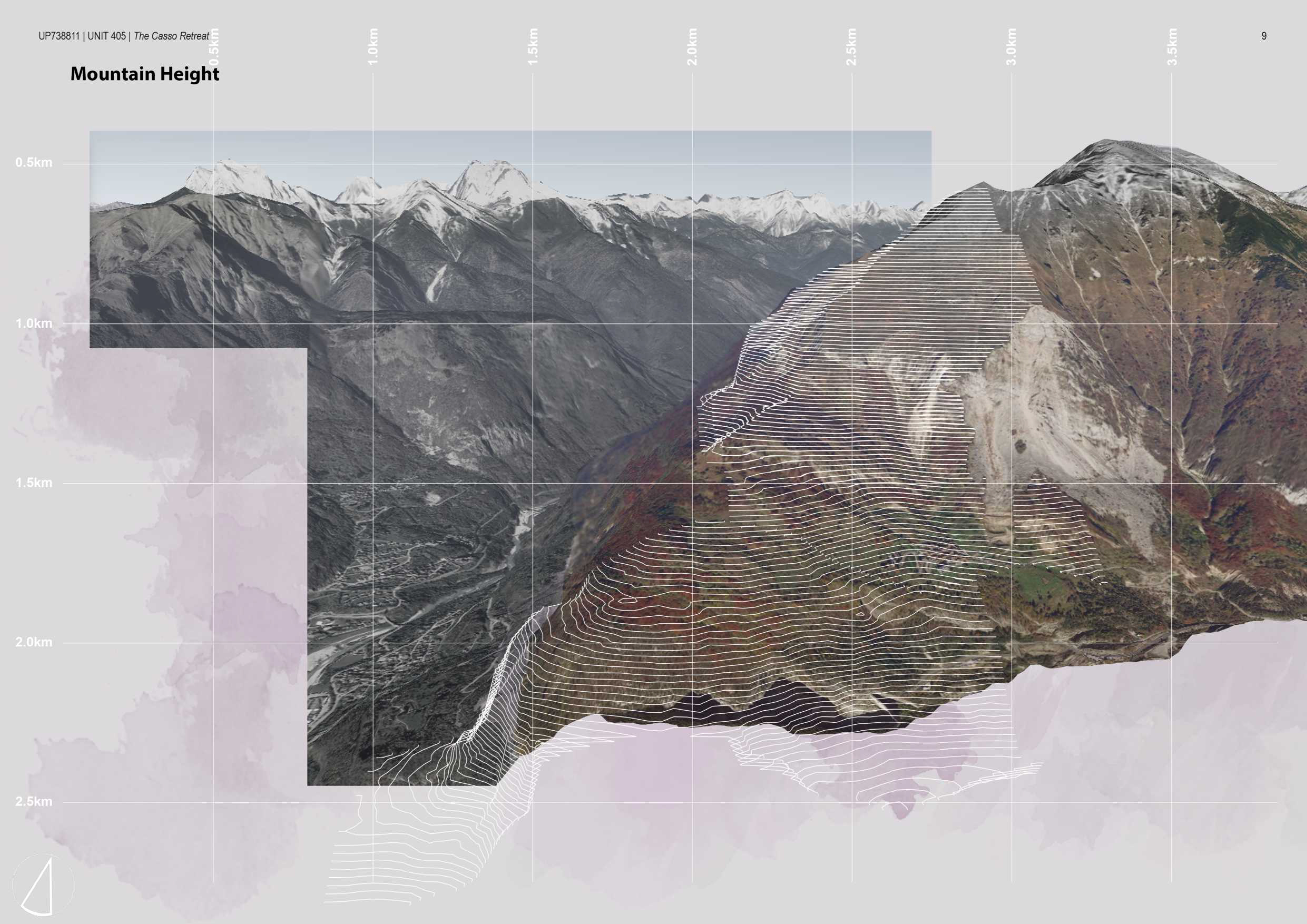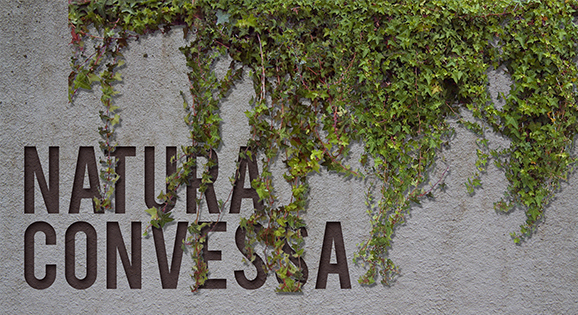
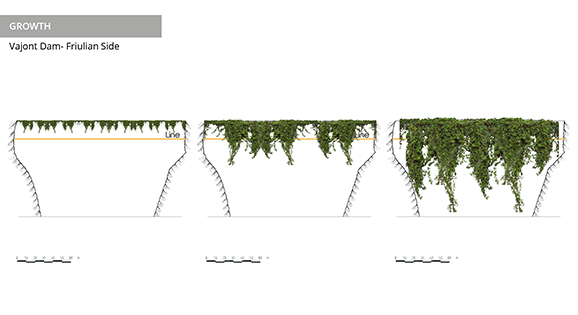
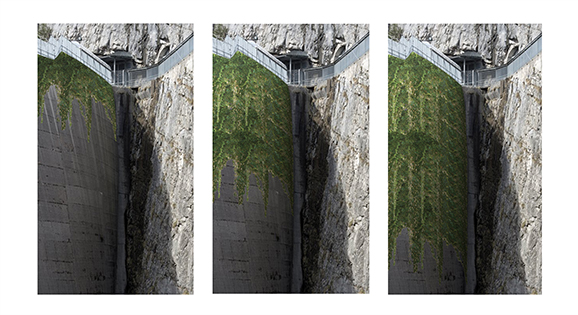
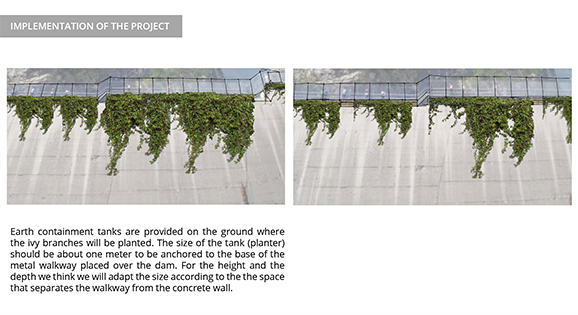

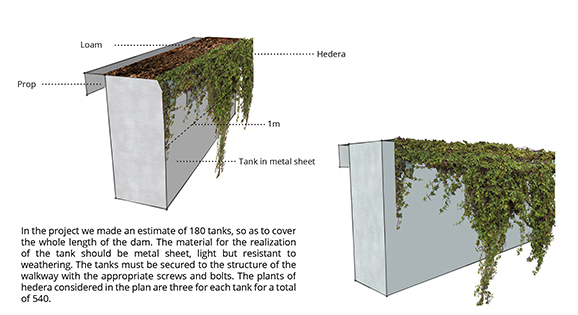
Our intervention is created with an ideal line to be traced with Hedera plants, which grow on the walls of the dam. Hedera plants, from the family of Araliaceae, is a resistant and strong herb that due to its nature it rapidly propagates attaching itself to various surfaces (organic and inorganic) on which it starts growing. For the a Call for a Line project we are imagining that the ivy will embrace the cement of the eastern wall (on the Friulian side) of the Vajont dam.
The line drawn on our ideal path becomes convex, the surface of the nature bends and incorporates within the strength and the effects of human creation, regaining the surface by clinging to the engineering work of the dam.
The vegetation makes a metamorphosis of the structure with which it communicates; it permeates space with a new perceptual impact in a diachronic way, growing in time. The concrete structure does not tend to change noticeably in size, while the living nature of the plants will follow a path by curving, stretching, extending itself over the surface of the dam.
Implementation of the Project:
Earth containment tanks where the ivy branches will be planted are provided. The size of the tank (planter) should be about one meter long to be anchored to the base of the metal walkway, over the dam. For the height and the depth we think we will adapt the size according to the the space that separates the walkway from the concrete wall. In the project we made an estimate of 180 tanks, so as to cover the whole length of the dam. The material for the realization of the tank should be metal sheet, lightweight but resistant to weathering. The tanks must be secured to the structure of the walkway with the appropriate screws and bolts.
–
Il nostro intervento consiste in una linea ideale da tracciare con piante di Hedera che crescano sulla parete della diga.
Il genere Hedera, che appartiene alla famiglia delle Araliaeae è una pianta erbacea, resistente, forte e robusta, che per sua natura si propaga aggrappandosi alle varie superfici (organiche e inorganiche) sulle quali si trova a crescere.
Per il progetto di a Call for a Line vogliamo immaginare che la nostra edera possa abbracciare il cemento della parete est (versante friulano) della diga del Vajont.
La linea tracciata dal nostro percorso ideale diviene convessa, la superficie della natura si curva e ricomprende dentro di sé la forza e gli effetti della creazione umana; essa si riappropria della superficie, aggrappandosi all’opera ingegneristica della diga.
La vegetazione compie una metamorfosi della struttura architettonica con la quale dialoga, investe con nuovo impatto percettivo lo spazio in modo diacronico, crescendo nel tempo. La struttura in cemento tende a non mutare percettibilmente le proprie dimensioni, mentre la natura vivente delle piante compie un percorso, si curva, allungandosi, estendendosi sulla superficie della diga.
Realizzazione del Progetto:
sono previste delle vasche di contenimento della terra dove piantumare i rami d’edera. La dimensione della vasca dovrebbe essere di circa un metro, da ancorarsi alla base del camminamento in metallo posto sopra alla diga. Per l’altezza e la profondità, pensiamo di adattarle alle misure dello spazio che separa il camminamento dalla parete in cemento. Il numero delle vasche previste è 180, così da coprire tutta la lunghezza della diga. Il materiale per la realizzazione delle vasca dovrebbe essere lamiera, un metallo leggero ma resistente alle intemperie. Le vasche devo essere assicurate alla struttura del camminamento con appositi viti e bulloni.

 firenze
firenze
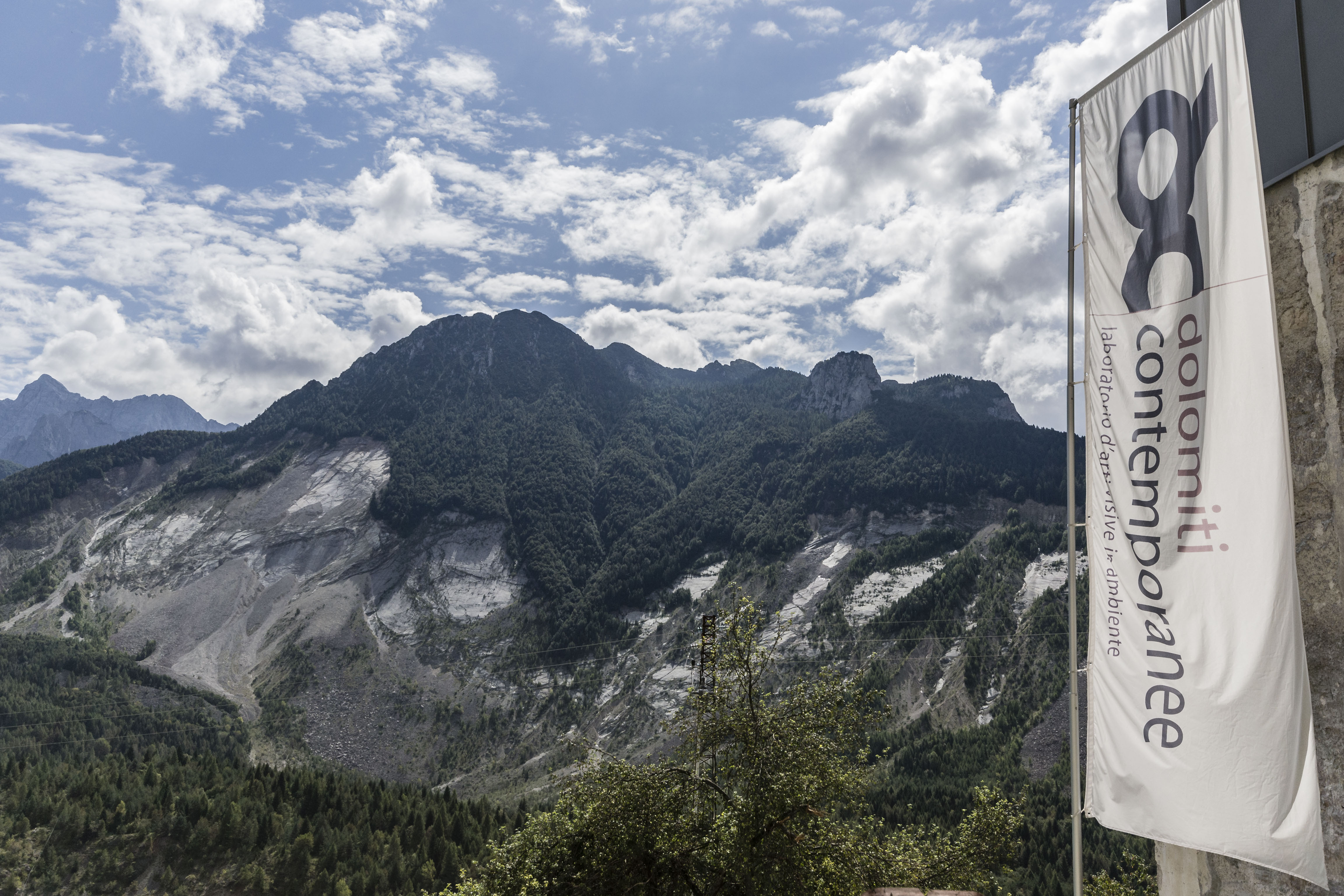
Tuesday, June 15th 2021, 2 – 4 PM, webinar panel:
two calls for vajont: fase _restart.
Vajont: [...]





